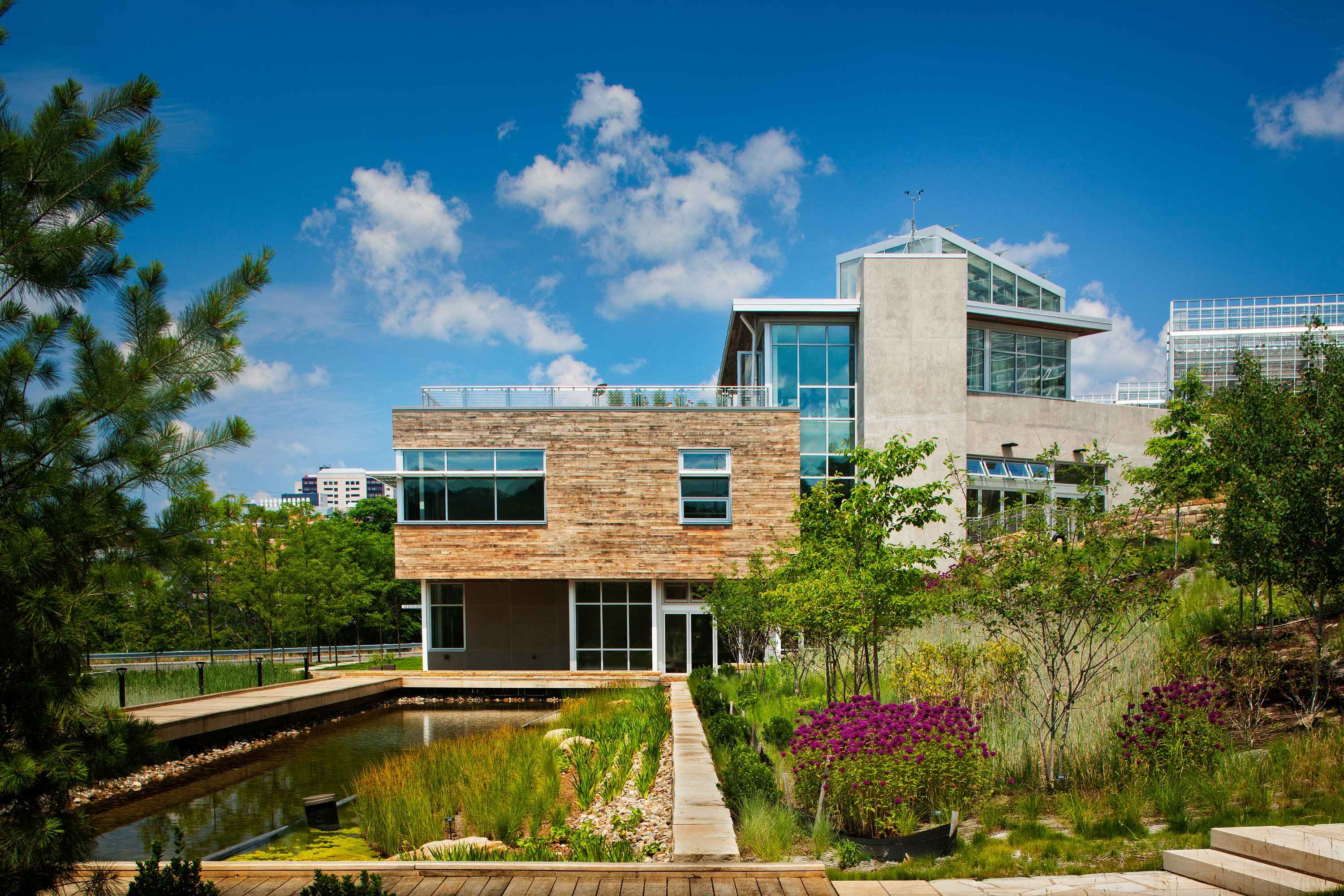Phipps Center for Sustainable Landscapes | LEED Platinum | Photo: ©denmarsh photography, inc.

LEED (Leadership in Energy and Environmental Design) is the world's most widely used green building rating system in the world. Available for virtually all building types, LEED certification provides a framework for healthy, highly efficient, and cost-saving green buildings, which offer environmental, social and governance benefits. LEED certification is a globally recognized symbol of sustainability achievement and leadership.
Better for business and the bottom line
LEED-certified buildings are a solid asset for investors, occupiers, and communities. They've proven to be top-performing commercial real estate investments.
LEED helps investors measure and manage their real estate performance. It allows investors to implement management practices that prioritize building efficiency, decrease operational costs and increase asset value.
LEED-certified buildings have consistently achieved higher rents than non-LEED counterparts, averaging $4.13 or 11.1% higher rent than non-LEED certified buildings*.
* Cushman & Wakefield. (2021). Green Is Good: Sustainable Office Outperforms in Class A Urban Markets.
LEED-certified assets outperform during recession-recovery periods, having lower vacancies than their non-LEED counterparts in the wake of COVID-19*.
* Cushman & Wakefield. (2021). Green Is Good: Sustainable Office Outperforms in Class A Urban Markets.
The pandemic accelerated tenant demand for ESG assets. Since 2020, occupancy rates for LEED-certified assets have increased from 90% to 92%. Non-LEED occupancy has fallen from 90% to 88% over the same period*.
* Cushman & Wakefield. (2021). Green Is Good: Sustainable Office Outperforms in Class A Urban Markets.
Better for people
LEED prioritizes physical health and well-being. The rating system focuses on strategies like banning smoking and reducing toxic exposure from materials to improve air quality. Active design and supporting the production of local, sustainable foods promote physical activity and healthy eating.
Employers in LEED-certified spaces report higher recruitment and retention rates and increased employee productivity*.
* U.S. Green Building Council. (2021). Research Anthology of Health-Promoting Building Strategies.
LEED creates healthier spaces with cleaner air and access to daylight and is free from harmful chemicals in paints and finishings*.
* U.S. Green Building Council. (2021). Research Anthology of Health-Promoting Building Strategies.
Improving indoor air quality can reduce absenteeism and work hours affected by asthma, respiratory allergies, depression and stress, leading to self-reported productivity improvements*.
* U.S. Green Building Council. (2021). Research Anthology of Health-Promoting Building Strategies.
Energy-efficient buildings help reduce pollution and improve outdoor air quality in major industrialized areas, making LEED a critical tool in reducing smog*.
* U.S. Green Building Council. (2021). Research Anthology of Health-Promoting Building Strategies.
Better for the environment
LEED certification is a global solution for cities, communities and neighborhoods. Through sustainable design, construction and operations, LEED can help new and existing buildings to reduce carbon emissions, energy and waste, conserve water, prioritize safer materials, and lower our exposure to toxins.
Buildings account for almost 40% of global energy-related CO2 and are critical in tackling climate change.
Energy-efficient buildings reduce pollution and improve outdoor air quality in major industrialized areas, making LEED a critical tool in reducing smog.
By building to LEED standards, buildings contributed 50% fewer GHGs than conventionally constructed buildings due to water consumption, 48% fewer GHGs due to solid waste and 5% fewer GHGs due to transportation*.
* Mozingo, L. and E. Arens. 2014. Quantifying the comprehensive greenhouse gas co-benefits of green buildings. Final report prepared for CARB and CEPA.
- 34% lower CO2 emissions*
- 25% less energy consumed*
- 11% less water consumed*
- 78 million tons of avoided CO2 emissions
- 89/100 average ENERGY STAR score for LEED projects
- 25% less energy on average used by LEED buildings compared to commercial buildings
- 1.3 million tons of coal equivalent saved each year
- 80 million tons of waste diverted from landfills*
By 2030, LEED projects will have diverted more than 540 million tons of waste from landfills.
Nearly 4 billion vehicle miles traveled have been avoided by occupants of LEED buildings, thanks to efficient locations and alternative transportation options.
Certified projects are estimated to have cumulatively specified more than $100 billion in green materials.